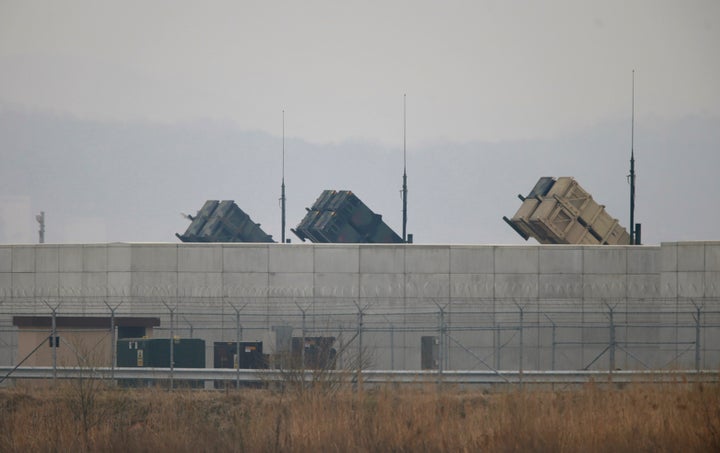
North Korea’s recent intercontinental ballistic missile (ICBM) tests, combined with the Defense Intelligence Agency’s warning that such missiles could be nuclear-capable by next year, focus the mind. One of the measures undertaken to mitigate this serious threat deserves much more attention than it has gained so far. I’m referring to the Terminal High Altitude Area Defense (THAAD), an American anti-missile defense system which the U.S. positioned this year in South Korea.
There are differences of opinions among experts how effective these systems are. Jeffrey Lewis, an arms control analyst at the Middlebury Institute of International Studies at Monterey, notes that THAAD can defend against short- and medium-range missiles, but would not against ICBM. Anyhow, so far South Korea allowed only the positioning of one battery that has a limited effect. However, even if these anti-missile batteries are much less valuable than advocates claim, we need to pay more mind to the high costs they exact. They are very destabilizing — because there is reason to hold that THAAD surveillance could be marshaled in the tracking, identification, and destruction of not just North Korean but also Chinese missiles.
Those quick to exclaim “Great, two for the price of one” should recall that nuclear powers hold each other at bay; that mutually assured destruction seems to be a major reason the big powers have avoided war since 1945. To remind: The logic of nuclear deterrence presumes that if either China or the U.S. launches a nuclear attack, they must expect to be paid back in kind, to be devastated, and therefore any major strike is virtually suicidal. However, if one nuclear power can prevent a retaliatory strike (by an anti-missile defense system, for instance), the other nation must fear the possibility of a devastating attack without the ability to respond. As a result, the mutual destruction is no longer assured, and the deterrence effect breaks down. Further, such concerns may well lead the newly vulnerable nation to put its nuclear forces on a hair trigger alert, ready to strike preemptively at any sign of preparation of an attack by the other. In short, if THAAD batteries are effective, they are highly destabilizing.
American officials claim that THAAD serves to protect against a North Korean, not a Chinese, attack. According to a joint statement issued by American and South Korean officials in 2016, the anti-missile system would “ensure the security of the South and its people, and [protect] alliance military forces from North Korea’s weapons of mass destruction and ballistic missile threats.” And, most importantly, the system is “focused solely on North Korean nuclear and missile threats and would not be directed towards any third party nations.” American officials sought to ease China’s anxiety by offering a briefing on the technical details of THAAD. As then U.S. Deputy Secretary of State Antony Blinken said, “We realize China may not believe us and also proposed to go through the technology and specifications with them…and prepared to explain what the technology does and what it doesn’t do and hopefully they will take us up on that proposal.” Defense Secretary James Mattis told reporters in South Korea simply, “There is no other nation that needs to be concerned about THAAD other than North Korea if they’re engaged in something that’s offensive.”
The Chinese are far from convinced. According to state news media, President Xi has said that THAAD will not solve the North Korea problem, and accused the U.S. of “using responding to a threat as a pretext to unilaterally deploy missile defense systems in Europe and Asia, causing serious harm to the strategic security interests of countries in the region.” Li Bin, an academic with expertise in arms control, explains that Chinese officials are worried THAAD’s radar system “would undermine China’s nuclear deterrence by collecting important data on Chinese nuclear warheads that the United States could not acquire from other sources.”With a relatively small nuclear arsenal, China is worried that surveillance of this kind would undermine its ability to strike back if attacked by the U.S.
Some American experts pooh-pooh China’s concerns, claiming that it has overstated THAAD’s capabilities in order to use the issue to weaken the U.S.-South Korea military alliance and solidify its own regional dominance. Robert Kelly, a professor of international relations, commented, “Beijing’s objections are shallow enough for the real message to come through: that South Korea should not further its military relationship with the United States.” Others, however, see Chinese grievances as legitimate, especially with respect to its strategic interests. Jaganath Sankaran of the Center for International and Security Studies at Maryland along with Bryan L. Fearey, director of the National Security Office at Los Alamos National Laboratories, write that China fears encirclement and that even initially mild defense postures like THAAD could accumulate growing capabilities over time and thus be converted into larger and more threatening postures.
Addressing China’s claim that THAAD may be used against their missiles, Greg Thielmann, former State Department intelligence analyst and board member of the Arms Control Association, argued that Beijing has legitimate concerns about the impact of the THAAD radar on China’s nuclear deterrent. Although this radar’s present configuration is oriented toward defense against North Korean missiles, it would only take hours to convert the system software into a configuration that would improve the effectiveness of U.S. strategic defenses based in Alaska and California against Chinese ICBMs by providing earlier tracking data on their launches toward the United States.
Theodore Postol, professor emeritus at MIT, notes: “[Deploying THAAD] puts South Korea at odds with China over a defense system that has no merit for South Korea’s defense, and it will certainly raise tensions between China and Japan.” Postol adds that an indirect and far-ranging consequence of THAAD could be the downgrade of American credibility, as deployment affirms “the view of many nations that deal with the U.S. that the U.S. is untrustworthy in terms of its commitments.”
Whether THAAD batteries are truly effective or their prowess much more limited than advertised, whether they are designed to work only against North Korean missiles but ignore Chinese ones, or whether the Chinese have reasons to be concerned—there is no doubt that they are highly destabilizing. The Chinese cannot simply accept that these anti-missile batteries will not hamper their ability to retaliate, especially given the U.S.’ continued refusal even to state that it will not strike first.
The U.S. cannot simply remove the THAAD system, because of the very serious North Korean threat to U.S. forces in the region, to South Korea and Japan, and soon to the U.S. mainland. These batteries do seem to be able to mitigate such a threat to some extent. However, their destabilizing side effects strongly compel the U.S. to intensify the quest for more effective and compensative ways to deal with the North Korean nuclear threat. As I suggested here, such a drive best entails a major deal with China—in which the removal of THAAD can serve as one bargaining chip. The bargain entails a commitment from the U.S. that if China helps defang the North Korea threat—the U.S. will have no reason to keep THAAD in South Korea.
This article was previously published in The Diplomat.
